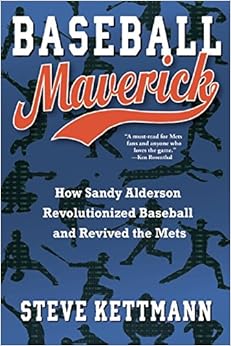 Okay, it’s not actually advertising, but The Player’s Tribune, an on-line “magazine’ founded by the recently-retired Derek Jeter, has come under some scrutiny lately.
Okay, it’s not actually advertising, but The Player’s Tribune, an on-line “magazine’ founded by the recently-retired Derek Jeter, has come under some scrutiny lately.
TPT purports to “publish first-person stories directly from the athletes” (emphasis added). Maybe there’s a difference of opinion on the definition of “directly.”
Richard Sandomir, the New York Times’ sports media writer, did a feature on TPT recently following a story contributed by the Boston Red Sox’s David Ortiz. Among other things, Sandomir wrote
Like nearly every post on the site, the Ortiz essay was not written directly by its bylined athlete but instead crafted from a recorded interview with a Tribune staff producer. Hoenig [Gary Hoenig, the editorial director of TPT] said these interviews are less traditional question-and-answer sessions than monologues with questions to nudge the conversation along. Editing is minimal, he added, and the athletes get the final approval. The staff producers who talk to them do not get bylines.
Providing athletes with unfettered access to fans carries with it the risk that they will lie or shade the truth. Is everything in Ortiz’s essay absolutely accurate? Are the athletes’ first-person accounts being vetted and edited as if they were being published by a more traditional journalistic enterprise?
Again, emphasis added. In fact — blanket statement — all future italics are my emphasis.
Awful announcing.com picked up on this.
It may not be shocking to many that most of the well-written pieces appearing on the site aren’t actually just the result of a professional athlete sitting down at a keyboard, but the actual discussion of this process raises plenty of questions. The way The Players’ Tribune presents its pieces is at best disingenuous, and it’s problematic from a couple of standpoints.
First off, there’s the nature of the portrayal. Having these pieces appear under an athlete’s byline, with no addition of “With [journalist],” suggests they’re actually written by the athlete. They may be using the athlete’s words, but it’s the uncredited producers who are actually assembling them into a piece. Yes, Hoenig says editing is minimal, and yes, athletes are signing off on the final pieces, but presenting these pieces as if they’re essays carefully crafted by the athletes themselves rather than assembled from interviews gives the wrong impression and context to readers. It also does adisservice to the athletes (and other prominent figures) who do actually write their own material.
There’s also the issue of credit. Ghostwriting is anything but new in sports, especially in the world of sports books, but at least “autobiographies” where a journalist has assembled from interviewing the athlete typically have the decency to credit said journalist (albeit typically in a much smaller font, using “with”). That’s good for the journalist and for the overall product; it illustrates more clearly where the content is coming from. Heck, even the McDonald’s advertorial interviews with athletes in Sports Illustrated include the name of the interviewer. Producers at The Players’ Tribune may have signed on with the understanding they wouldn’t get credit for crafting these pieces, and that’s their right. However, leaving their names off these pieces presents an incomplete picture to readers of what exactly this content is. Leaving out writers’ credits also reinforces the lack of value ascribed to writers in general, especially in the sports world. Sports is usually very clear and specific about who did what, as players get credit for their statistics. We wouldn’t say that a writer hit a game-winning home run actually hit by Ortiz, so why is the reverse acceptable?
Another question here is if there’s value in “first-person” pieces at all. This style of writing’s become more and more prominent lately, especially in books, but another media example comes from SI doing so on their Jason Collins scoop (which, at least online, carried no mention of Franz Lidz, who actually wrote the piece). The advantage of this style is it can present athletes’ feelings and thoughts more easily, and if they’re accurately reflected by the writer, it’s not always bad. However, the disadvantage is that there’s understandable audience skepticism with any first-person piece that’s not completely written by the person whose byline appears on it. It’s impossible for readers to know how much of the piece (and not just the words, the arrangement) is actually coming from the supposed source, and while “first-person” may make for interesting reads, it sets off some warning flags about what exactly this content is.
Truth in advertising
 Wish I’d had more advance notice on this, but…
Wish I’d had more advance notice on this, but….
 The
The  The
The  Books about the business and businesspeople of baseball are becoming more available these days; I devote a whole chapter on the topic in 501 Baseball Books.
Books about the business and businesspeople of baseball are becoming more available these days; I devote a whole chapter on the topic in 501 Baseball Books. Kettmann has written his own books; worked as a ghostwriter, notably for Jose Canseco’s memoir
Kettmann has written his own books; worked as a ghostwriter, notably for Jose Canseco’s memoir  Billy Martin: Baseball’s Flawed Genius
Billy Martin: Baseball’s Flawed Genius Okay, it’s not actually advertising, but
Okay, it’s not actually advertising, but